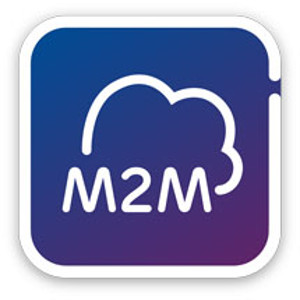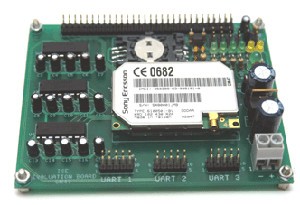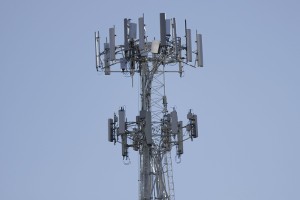The emerging Narrowband IoT (NB-IoT) standard is a wireless technology designed especially for enabling cellular connectivity to Internet-of-Things devices, and is designed to combine long-range mobile connectivity with compatibility with existing LTE mobile network infrastructure and low power consumption for sensors or other long-lived devices.
As the NB-IoT standard is specifically aimed at enabling cellular low-power, wide-area (LPWA) wireless networks, targeted at machine-to-machine and IoT applications such as environmental and agricultural monitoring and the metering and automated reading of utilities such as water and power meters.
Vodafone believes the emerging NB-IoT standard will be the “killer” technology in the LPWA wireless IoT race, beating alternative technologies such as SigFox and LoRa. Vodafone is one of the key players in the NB-IoT forum, an industry association established last year to advance the development of narrowband IoT technology.
NB-IoT is one of several wireless technologies that aim to overcome the power and therefore transmission range limitations of alternative wireless networking technologies for LPWA Internet-of-Things applications. NB-IoT is a licensed-spectrum technology, unlike alternatives such as SigFox and LoRa which rely on unlicensed, or class-licensed, RF spectrum.
Although the use of unlicensed spectrum means that other LPWA technologies do not require a specific spectrum allocation and therefore are cheaper and easier for service providers to deploy, the limited bandwidth, relatively high congestion and limited transmission power in these radio bands limits the range and performance of the network.
With more and more wireless electronic devices in use everywhere, congestion in the unlicensed ISM radio bands is only going to get even worse in the future, NB-IoT hopes to overcome these limitations, in part by using licensed spectrum allocations like the rest of the mobile network.
The next generation of wide-area wireless IoT is a competitive field, with LoRa representing a more “open” system using unlicensed (but relatively congested) radio spectrum, and so far this has attracted support from many telecommunications service providers and operators including French operators Orange and Bouygues Telecom.
SigFox is also continually growing, with claims that they are presently deploying or operating networks in 17 countries. NB-IoT is still lagging slightly behind in this regard, with no widespread commercial deployment yet.
Vodafone has chosen to throw its weight behind NB-IoT instead of the competing technologies, however. Vodafone, in partnership with Chinese equipment supplier Huawei Technologies, which is another major NB-IoT backer, has recently opened a dedicated lab for NB-IoT development at its Newbury, UK headquarters.
NB-IoT Forum members, and other developers and organisations looking to use the NB-IoT standard to support commercial services, will now be able to test their applications at Vodafone’s new facility.
And with the backing of Vodafone, Huawei and other major industry players – NB-IoT is now in the process of being adopted as an official standard within the 3G Partnership Project (3GPP), with the expectation that it will be finalised and included in LTE release 13 later this year.
There have been some delays in this process, however, and there have been suggestions that NB-IoT will not be finalised in time for Release 13, instead slipping to Release 14 at some point in the future.
This has the potential to be a significant setback for the nascent technology, slowing down its widespread acceptance industry-wide, as well as allowing extra time for competing LPWA technologies such as LoRa and SigFox to continue to grow, with more deployments, bigger networks, and greater provider and end-user familiarity with these technologies.
One of the factors behind Vodafone’s support for NB-IoT is its strong cost-effectiveness for providers who have already built and operated modern mobile networks. Vodafone claims that 80 to 90 percent of their currently deployed base stations use Huawei’s SingleRAN technology for their Radio Access Network (RAN).
SingleRAN technology uses software-defined radio to allow a single network to support multiple different mobile telecommunications standards without hardware replacements, making it cheaper and easier to keep up with new developments in mobile communications standards.
The easy integration of NB-IoT into the existing LTE mobile ecosystem, and its compatibility with LTE network infrastructure without new hardware deployments, are features that make it particularly attractive to established providers in the mobile communications sector.
For mobile network operators that maintain older base stations that have not yet been upgraded to LTE, however, moving to networks that can support NB-IoT may be a more expensive and slow process.
Nevertheless, NB-IoT is coming and this is where the LX Group us ready to work with you. We have end-to-end experience and demonstrated results in the entire process of IoT product development, and we’re ready to help bring your existing or new product ideas to life. Getting started is easy – click here to contact us, telephone 1800 810 124, or just keep in the loop by connecting here.
LX is an award-winning electronics design company based in Sydney, Australia. LX services include full turnkey design, electronics, hardware, software and firmware design. LX specialises in IoT embedded systems and wireless technologies design.
Published by LX Pty Ltd for itself and the LX Group of companies, including LX Design House, LX Solutions and LX Consulting, LX Innovations.


